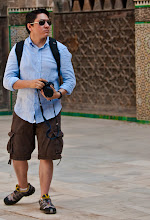Have patience
Eye contact
- Good eye contact helps the viewer to make a connection with the subject, adding impact
- Whenever possible try to get at same eye level of your subject
- Make slow deliverate movements to ensure you are not perceived as a threat and wait until you see catchlights in the eyes
Panning
- Convey the feeling of speed as your subject runs or flies by your sreen
- It will take practive, start by a shutter speed of 1/30, 1/125 seconds)
- Prefocus on the sport where the creature will pass in front of you and fire the shutter.
- Your settings will need tweaking according to the lighting conditions speed of the animal.
Relieve stress
- Make sure you give the animal time to relax, such as dogs. In case of dogs, let them be dogs before you start shooting them, play around with them
- Once you begin if it begins yawning lor laying down he is showing signs pf stress and just needs to be a dog again.
The right lens
- Go for the fastest lense you can aford
- Image Stabilization either on lense or camera can make a big difference
- In some situations a monopod can help achieve sharp shoots
- If you can justify the cost, a prime lense offers unrivalledmimage quality and sharpness
Be invisible
- For cerain species that are hard to capture, weate quite clothes in natural subdued colors, steer clear of perfurmed soaps and lay off afteshave the day of the shot
- Use bushes and trees for cover or invest in scrim netting to drape over you and your camera, disguising your outline
Add water
- Any body of water can make great aditions to your photographers acting as a foreground interest or prodiving a reflective surface to add another dimension to your subject
- Calm water often works best for reflections of wildlife.
Aperture
- A fast aperture may be necessary in dim conditions in order to maintain image sharpness, but shooting with your lense wide open generates a shallow DOF, recommended is at an f/8 to allow plenty of light to nter the lense as well as to create enough separation Boost your ISO slightly so u can still shoot with a fast shutter speed.
The right light
- The midday sun flattens fitures and reduces contrast so is better to stay until the sun hangs lower.
- If you position yourself correctly, you should find that this creates dramatic, high contrast lighting, with deep shadows cast across the landscape.
- Capture your subject in full sun against a shadowy background and you have a recipe for a moody spectacular show
Freeze the Action
- Some actions can look great when frozen completely but be aware that this mean you lose some of the drama. This is a good approach when trying to capture a decisive moment. Such as the apex of a horse jump, a cat jumpng filling the frame, try 1/1000 sec shutter speed
Flash
- Sometimes a burst of fill-flash can make a real difference to your shot, lifting your subject out of the shadows or simply adding a glint to their eyes.
- You are not using the flash to illuminate your subject entirely, merely to fill in some of the harsher shadows and inject some life into your photo, so dont over do it. Always be aware of your subjects disposition; if they are nervous its not worth the risk of causing them stress - find another subject.
Filters
- A soft focus filter can work really well for some subjects, particularly when ytou want to add a warm glow or soft nostalgic feel to the image. This filter doesnt cut the amount of light entering the lens, so you can use it without affecting your exposure settings. It also works really well with light subjhectsm bathed in sunlight.
- An ND grad is essential for balancing compositions with dark subjects agaunst bright backgrounds and a ND filter helps to cut the amount of light entering your lens allowing you to extend your exposure time without overexposing the image
Blur the action
- Sometiomes a more abstract approach to photographing your moving subject can yield a very pleasing shot. Mount your camera up on a tripod set the shutter speed of 1/8, 1/2 secs, predocus on a point that your subject will pass and fire the sutter just as they sweep past your lense withou trying to track them, the result should be a colorful blur of movement across the frame, capturing the speed and drama of the animals movement. You can vary this technique by panning the camera slightly to achieve an overall blurred effect, but still retain some of the subject's distinguishin feature.
Autofocusing
- For some subjects select a single central focusing point, but this doesnt always work. The solution is to select several focus points around the center so even if part of a wing crosses that rectangle of points the AF mechanism can lock onto it. This can be a very useful way to accurately tracking the fast moving birds by using continuos auto focus.
Birds in flight
- Its best to set to either Aperture, or Shutter Speed, set your ISO according to the light conditions.
- Use a shutter of around 1/500 seconds to freeze the action but a little bit slower would show a very interesting movement in the exposure
- Ensure you are using burst mode on your camera




0 comments:
Post a Comment